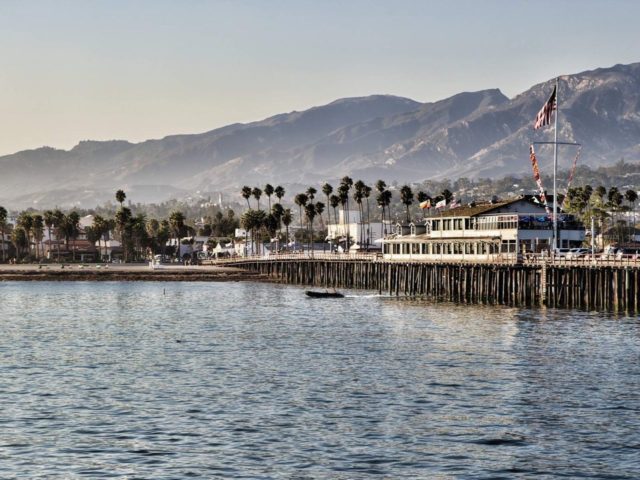Santa Barbara has finally escaped being the last California community to suffer “extreme drought,” but it remains the poster child for blow-back from limiting water to limit growth.
Santa Barbara County and the Mojave Desert constitute the last 4.1 percent of California that is still in severe drought, according to the U.S. Drought Monitor. Nobody is surprised that the desert is in drought, but Santa Barbara, county-wide, is at 168 percent of “normal-to-date” average rainfall, and already at 125 percent of the county annual average.
Santa Barbara’s water problems started when local voters tried to limit growth by voting overwhelmingly in 1979 against a $102 million bond issue for the Phase II pipelines “to import and distribute” water from the California State Water Project. Having joined the SWP in 1963, the county remained responsible to make interest and principal payments for its portion of the Oroville Dam, the state aqueduct, and a 15 mile Phase I canal.
Over the next decade, the city’s population supposedly grew by only 15 percent, from 74,414 to 85,571 in 1990. But water use grew by 27 percent, from 12,745 acre-feet in 1978-79 to 16,092 acre-feet in 1988-89. The New York Times wrote in 1991 that the higher use was due to the “Hispanic population” swelling 69 percent, as many “crammed into illegally converted garages or are doubled up.”
The chronic use of groundwater overdraft pumping to make up for the shortfall in the 1980s caused the water levels in the five underground aquifers along the coast of Santa Barbara County to drop to as low as 84 feet below sea level, according to the U.S. Geological Survey. As a result, the aquifers suffered permanent damage to capacity from high sodium and chloride concentrations typical of saltwater intrusion during the 1980s.
With the annual price of water quadrupling to $40 million and more than 200,000 trees dying, Santa Barbara County voters approved a bond issue by a 2-to-1 margin in 1991 to complete the “Phase II” pipeline to connect to the State Water Project they were already funding. But inflation and environmentalist lawsuits quadrupled the pipeline’s cost to $400 million and pushed the expected completion date out to 1997.
The City of Santa Barbara tried to respond to the crisis in 1991 by building the $34 million Charles Meyer Desalination Plant. When the facility was used for test runs, the wastewater dumped back into the ocean was determined to be loaded with a poisonous cocktail of salts and treatment chlorine that would create dead zones. The facility never sold a drop of water and did not operate for the next 25 years.
The City of Santa Barbara in 2015 committed $55 million to reopen the desalination plant with a capability of producing 3,125 acre-feet of water per year at an annual cost of $4.1 million. The Santa Barbara Independent reported that after 12 months of delays and $15 million in cost overruns, the plant is expected to open in late March at a $70 million cost.
The East Bay Times estimates that the cost for Santa Barbara’s desalinated water will be about $2,400 an acre-foot. That compares to $150 to $800 for ground water; $300 to $400 for reservoir water; $1,200 for recycled water, and $1,500 to $2,000 for water from the State Water Project.
Despite Santa Barbara County receiving about 24 inches of rain so far this year, the country’s four above-ground reservoirs are only 32 percent full. A major issue is that three of the reservoirs were located on the inland side of the coastal mountains, which that experience lower precipitation due to rain shadow.
But more revealing, the County of Santa Barbara Water Agency reported in 2011 that its reservoir capacities had shrunk by up to 10 percent due to siltation. The agency suggested that with the county experiencing 112 percent average countywide rainfall between 2009 and 2011, there should be no concerns that the groundwater overdraft under two of their reservoirs was already at 41,000 acre-feet. But the Water Agency stated they would focus on investigating the future impacts of anthropogenic climate change.

COMMENTS
Please let us know if you're having issues with commenting.